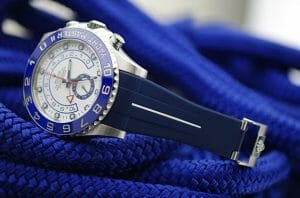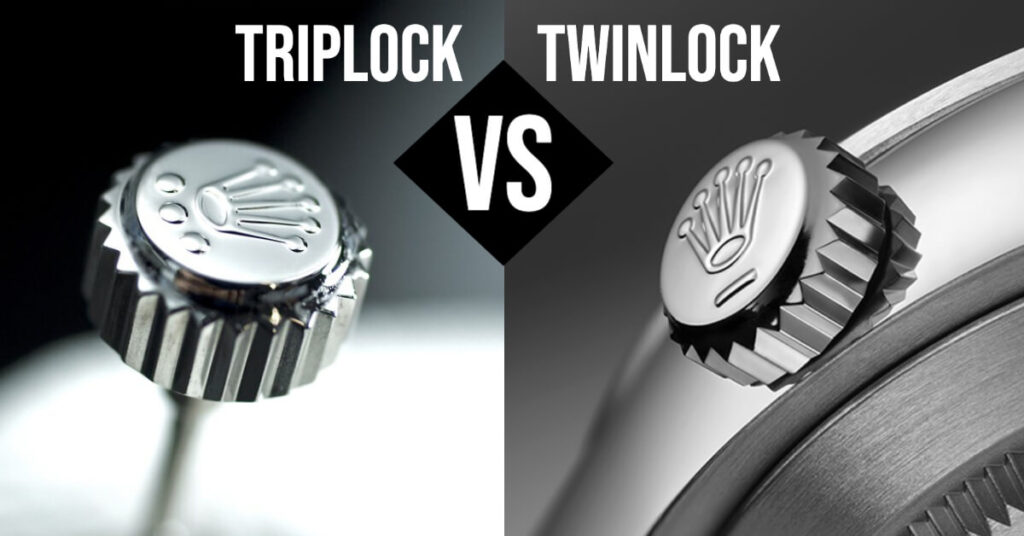
Rubber B was the first company in the world to develop custom rubber watch straps exclusively for Rolex timepieces, and since then, the company has added several other prominent watchmakers to its product portfolio. Rubber B also creates custom rubber watch bands for watches produced by Panerai, Roger Dubuis, and Audemars Piguet.
Our blog content will often alternate between a wide selection of topics here, including important news within the world of horology, pieces that focus on the intersection of pop culture and watch collecting, and other notable events within the horological world. Occasionally, however, our content does cover an additional category – the technical side of watchmaking, with pieces that focus more on learning about how a watch is actually constructed from a mechanical standpoint.
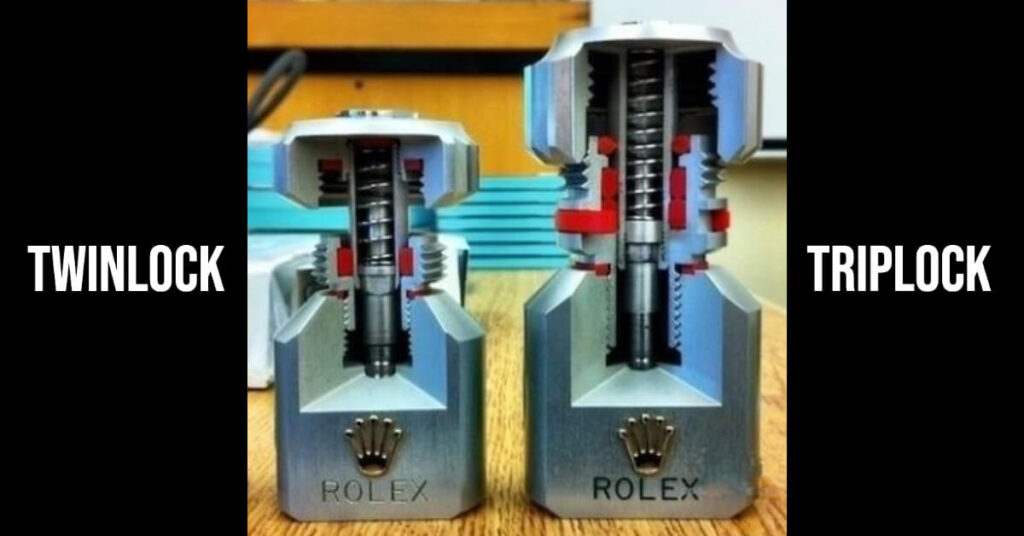
For this particular blog entry, we are going to learn more about Rolex’s Twinlock and Triplock crown systems. The two are directly related to one another, with the Triplock being the direct successor of the Twinlock. But what, exactly, are the differences between the two systems? In order to fully answer this question, one would have to have some background on Rolex’s long and storied history of producing dive watches.
A Brief History of Rolex’s Dive Watches
One of Rolex’s many claims to fame is that, in 1926, they released the world’s first waterproof watch, which was called the Oyster. The watch was promoted by Mercedes Gleitze, who was the first British woman to swim the English Channel. Its success, from a technical standpoint, was made possible by the implementation of a screw-down waterproof winding crown.
This crown was fitted with a metal gasket, which would then screw into a tube that was located inside the watch case. This allowed for the compressed gasket to form a barrier that would be watertight, thereby ensuring that the watch would not be damaged when it was exposed to water.
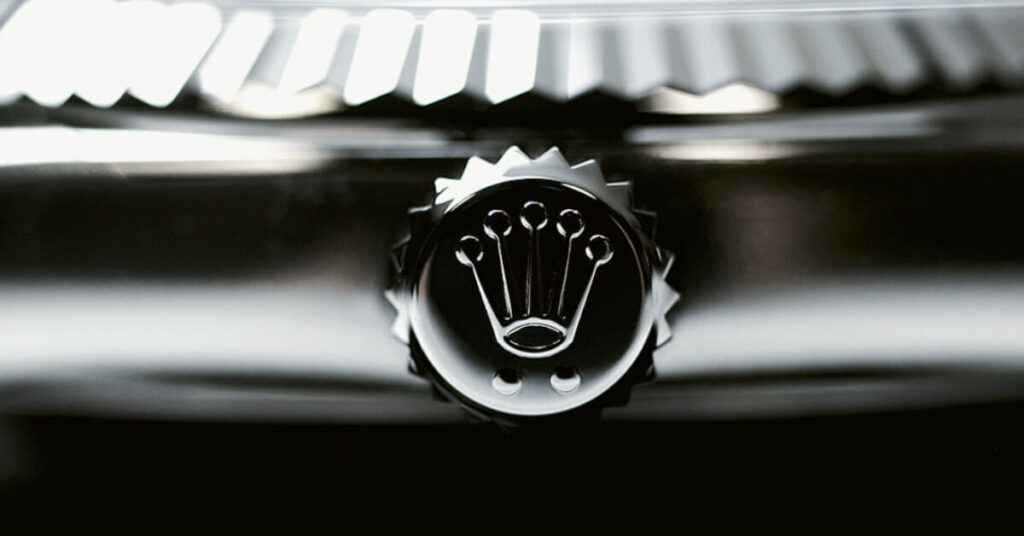
The Introduction of the Rolex Twinlock
For the next several decades, the original Oyster gasket system continued to work, and Rolex would successfully implement it on many of their watches. However, Rolex has never been the kind of company to rest on their laurels for too long, and they wanted to craft a watch that would function as a proper dive watch instead of being simply waterproof – thus, in 1953, the Rolex Submariner was born.
However, in order to make the Rolex Submariner a fully functional dive watch, they would have to implement a new type of crown system, as the old one would not function at the depths this watch was intended to go. Rolex would solve this problem by creating the Rolex Twinlock, which was comprised of two O-ring gaskets that were made from synthetic materials, as opposed to the previous single metal gasket. The result of this design is that two sealed zones were created, allowing the watch to withstand much greater pressure without being damaged.
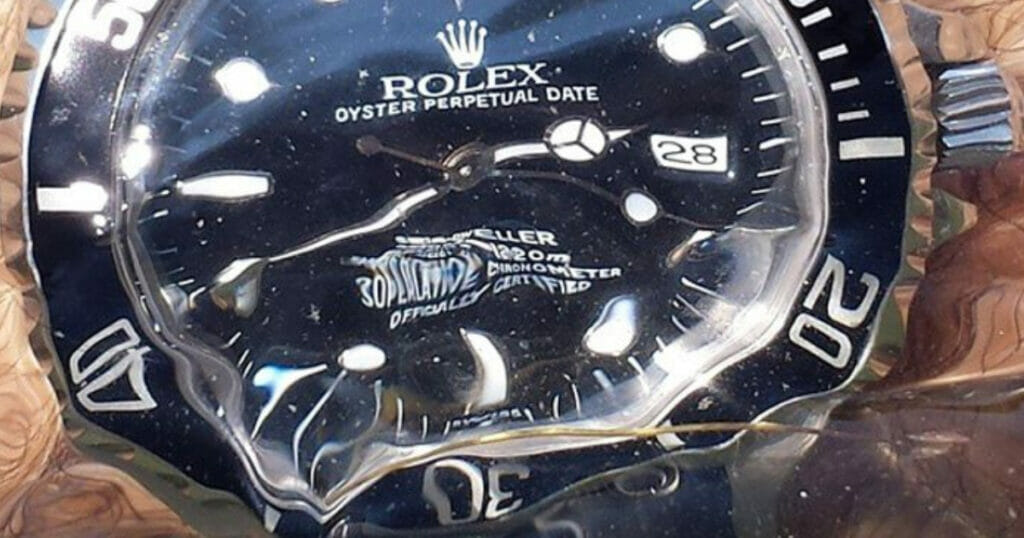
Having implemented the design principles of the original first screw-down crown, the Rolex Twinlock system has one O-ring gasket under the crown, which helps to push against the case. This assists in creating a wall against any outside liquid, which would damage the watch. The second O-ring gasket was located inside the tube, which surrounded the winding stem, and was designed to keep the water out of the watch, even when the crown was unscrewed.
Today, the Rolex Twinlock winding crown is seen on many Rolex watches and can be noted by the use of two dots under the coronet on models plated in gold, one dot for models plated in platinum, and a bar on models plated in steel. However, these markings only apply to current Rolex models. Older Rolex models had a bar for gold as well as steel models, and two dots for white gold ones as well.
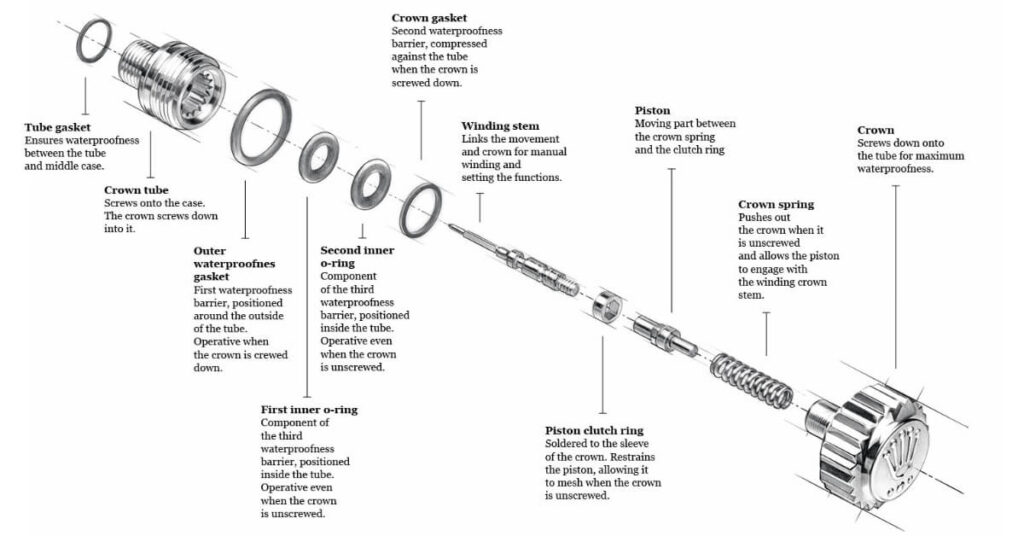
The Triplock Winding Crown
In 1970, Rolex once again redesigned their winding crown, this time calling it the Triplock. As its name implies, this winding crown had three sealed zones – two of the O-ring gaskets are stationed within the tube, while the third is located within the winding crown. The Triplock Winding Crown was initially seen on the Sea-Dweller dive watch.
Today, all Rolex dive watches include this feature, and you can tell if you have them on your watch by paying close attention to the coronet on your watch. Triplock winding crowns have three dots under the Rolex coronet, but this will vary depending on the type of metal used for your watch. Steel models will have three dots of equal size, gold models will have one large center dot, and platinum models will have one small center dot.
What is the Difference Between the Rolex Twinlock and the Triplock?
Simply put, the difference between them is how deep the watches are able to safely travel underwater. The Rolex Twinlock, which was originally featured on the Submariner, can travel safely for up to 300 meters. The Triplock, by contrast, in its original iteration, was able to go up to 1,220 meters, and then it was later refined on the Deepsea to go even further, reaching a stunning current maximum of 3,900 meters.
In short, Rolex has been continually honing this technology for decades and will likely continue to do so in the future.
Are You in Need of a Custom Rubber Watch Band For Your Luxury Watch? Visit Rubber B Today
All of Rubber B’s watch straps are made from 100% vulcanized rubber and are crafted exclusively by experts in Switzerland. Orders are shipped out within 24 to 48 hours of receiving them, and Rubber B also offers shipping options to its international clientele as well.
If you would like to learn more about all of our products, shipping policies, and pricing, or have questions about our custom rubber watch straps, please visit the Rubber B website today for more information. One of our team members will be happy to answer your inquiry in a prompt manner.
Follow Us on Instagram














